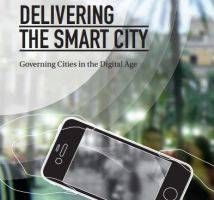November 26, 2014
CBRE identifies priorities for facilities management excellence
 To achieve operational excellence in facilities management, organisations must balance three priorities: managing costs efficiently and creating value; maintaining high satisfaction among occupants and clients; and proactively stewarding property and infrastructure. Forging the Iron Triangle: Facility Management Operational Excellence, is a new report by the CBRE’s Global Corporate Services research team and the result of a year-long inquiry into mainly US-based facility management organisations, industry scholarship, and an industry-wide survey of more than 125 facility management executives. It reveals the initiatives that have a lasting impact on facilities management team performance and the reduction of risk, increasing workplace satisfaction and extending the useful life of properties or building infrastructure. Talent management, risk management and life cycle cost analysis are also found to be prevalent in high performing FM teams.
To achieve operational excellence in facilities management, organisations must balance three priorities: managing costs efficiently and creating value; maintaining high satisfaction among occupants and clients; and proactively stewarding property and infrastructure. Forging the Iron Triangle: Facility Management Operational Excellence, is a new report by the CBRE’s Global Corporate Services research team and the result of a year-long inquiry into mainly US-based facility management organisations, industry scholarship, and an industry-wide survey of more than 125 facility management executives. It reveals the initiatives that have a lasting impact on facilities management team performance and the reduction of risk, increasing workplace satisfaction and extending the useful life of properties or building infrastructure. Talent management, risk management and life cycle cost analysis are also found to be prevalent in high performing FM teams.






























October 6, 2014
A feeling of togetherness is essential and motivating, so why would we kill off the office?
by Mark Eltringham • Comment, Facilities management, Flexible working, Knowledge, Workplace design
It is still depressingly commonplace to read proclamations of the death of the office. These are usually appended to some survey or other about the rise of flexible working or a case study of a workplace devoid of desks (or, more likely, one in which none are pictured). Of course, the actual conclusion we can draw from such things is that the office as we once knew it is now dead or mutating into something else, but that’s true for every aspect of modern life. The constant factor that ensures offices will always exist, in some form or other is the human they serve. We know that because, as Tom Allen proved at MIT in the 1980s, people communicate less well the greater the physical distance between them. Now new research from Stanford University shows how the very idea of ‘togetherness’ can have a significant impact on the way people perform. The study, by researchers Priyanka Carr and Gregory Walton was published in the Journal of Experimental Social Psychology and concluded that ‘social cues that signal an invitation to work with others can fuel intrinsic motivation’.
More →